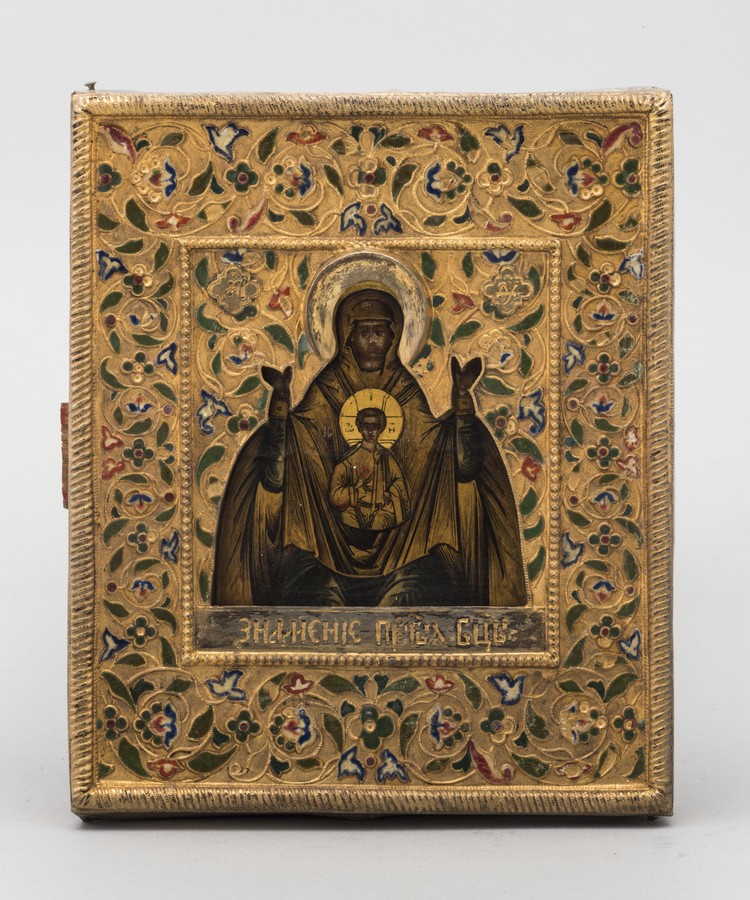A large portion of the Russian Empire’s population were Old Believers, who did not accept Patriarch Nikon’s reforms in the XVII century or the new secular culture implemented by Peter the Great. In icon painting they held strictly to medieval models and in the revetments they avoided overly obvious signs of the modern era like high-relief embossing, rocaille patterns, and Imperial two-semisphere crowns instead of the medieval serrated ones. The typical Old Believer revetments of the XVIII-XIX centuries display an engraved twining grapevine, the symbol of the Christian Church.
There is reason to think that the Old Believers were the first to try to revive the ancient technique of filigree enamel, in which the enamel fills the cells between soldered twisted wires. On the revetment of the icon of Our Lady of the Sign by the Moscow workshop of Maxim Shelaputin, the partitions between fragments of enamel are not soldered but are embossed from the reverse side. The pieces from this workshop suggest that the Shelaputin was first to use enamel and not Pavel Ovchinnikov, as is thought based on the newspapers of the 1880s.
